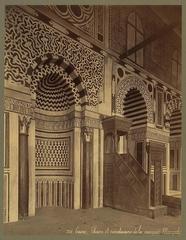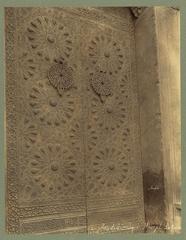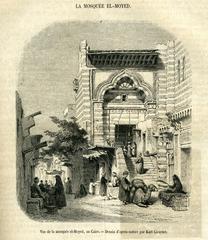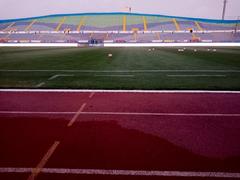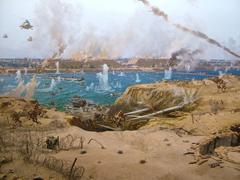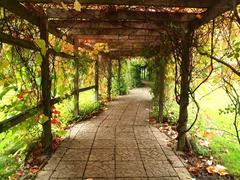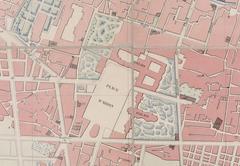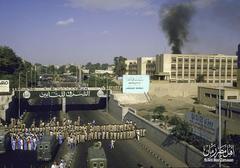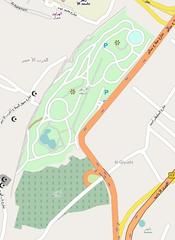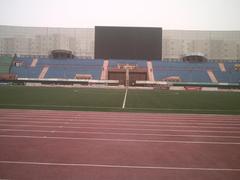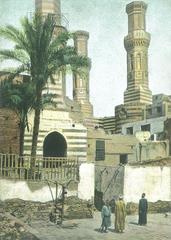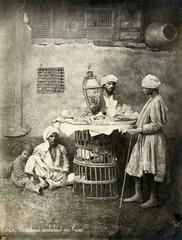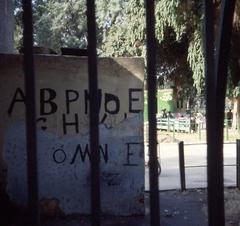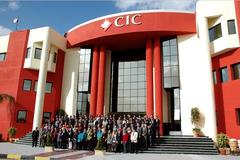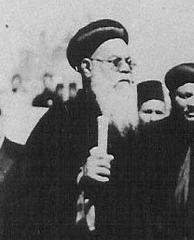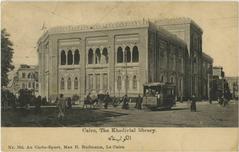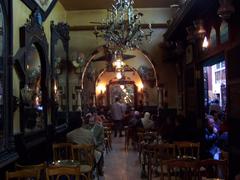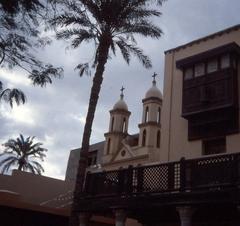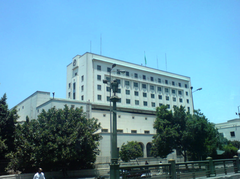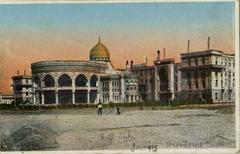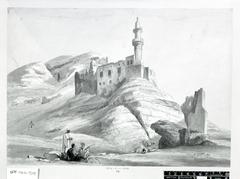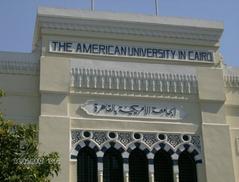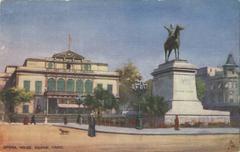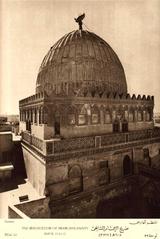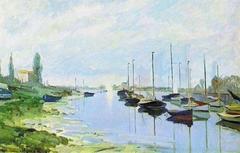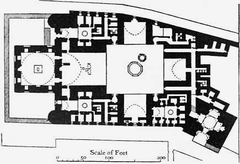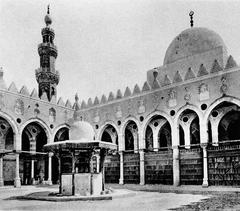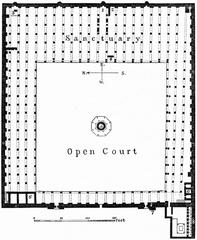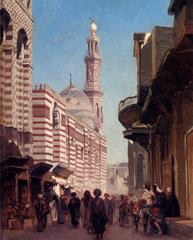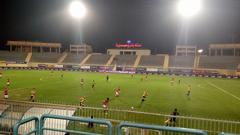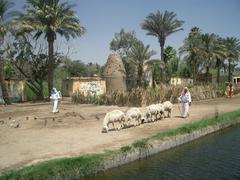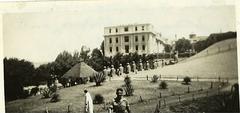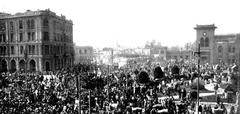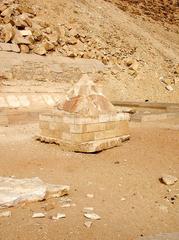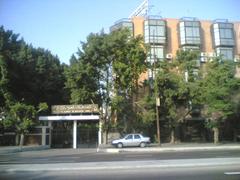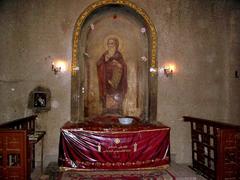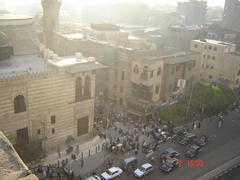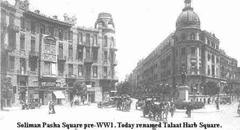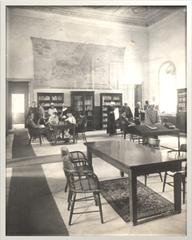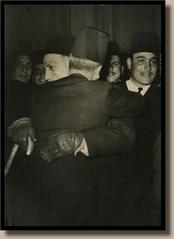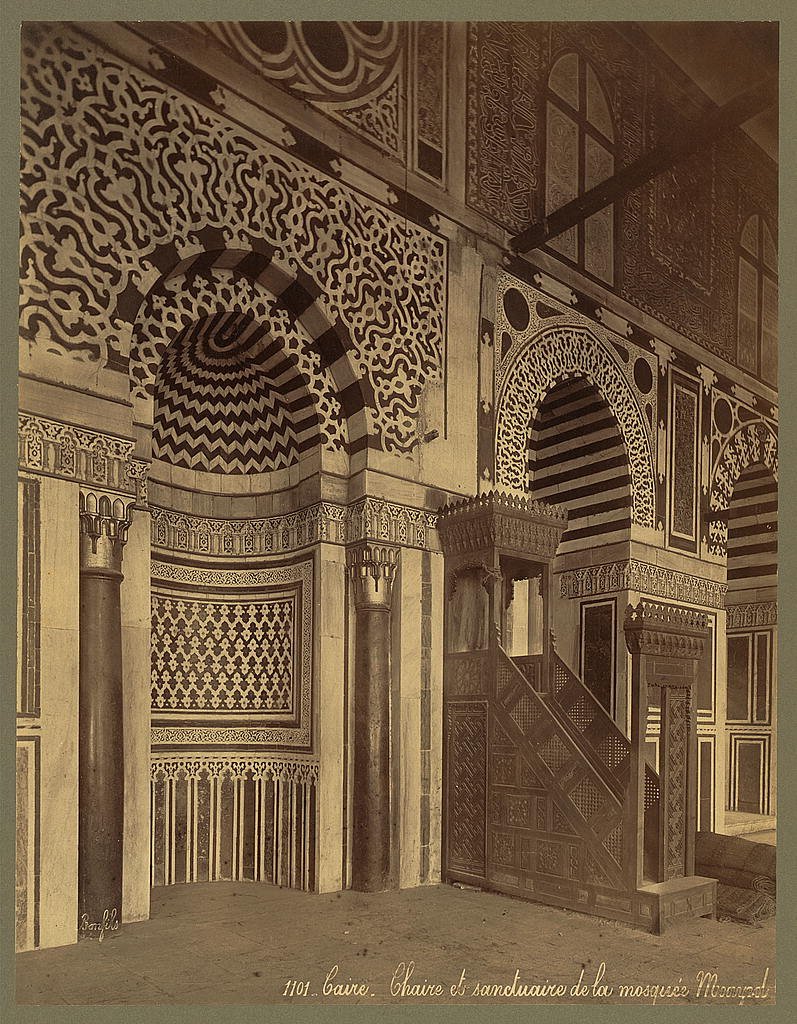
Visiting Sultan Al-Muayyad Mosque in Al Nozha Egypt: Hours, Tickets, and Tips
Date: 23/07/2024
Introduction
The Mosque of Sultan Al-Mu’ayyad Sheikh, nestled in the vibrant district of Al Nozha, Cairo, is a monumental testament to the architectural and cultural grandeur of the Mamluk era. Built between 1415 and 1421, this mosque was commissioned by Sultan Al-Mu’ayyad Sheikh, a former mamluk who rose to power and transformed his personal history of adversity into a legacy of architectural splendor. The mosque’s elaborate stone carvings, geometric patterns, and towering minarets stand as a significant reference point for Mamluk architecture, attracting scholars, historians, and tourists alike (ArchNet). Beyond its architectural marvels, the mosque also serves as a central hub for religious and educational activities, emphasizing its enduring significance in Egyptian society. This comprehensive guide delves into the multifaceted history, architectural brilliance, and practical visitor information for those planning to explore this remarkable site.
Table of Contents
- Foundation and Construction
- Architectural Significance
- Historical Context
- Cultural and Religious Role
- Renovations and Restorations
- Historical Events
- Preservation Efforts
- Influence on Later Architecture
- Modern-Day Significance
- Visitor Information
- FAQ
Foundation and Construction
The Sultan Al-Mu’ayyad Mosque, located in Al Nozha, Egypt, stands as a testament to the architectural and cultural grandeur of the Mamluk era. The mosque was commissioned by Sultan Al-Mu’ayyad Sheikh, who ruled Egypt from 1412 to 1421. The construction of the mosque began in 1415 and was completed in 1421. Sultan Al-Mu’ayyad Sheikh, originally a mamluk (slave soldier) who rose to power, intended the mosque to serve as both a religious and educational center.
Architectural Significance
The mosque is renowned for its intricate architectural design, which reflects the Mamluk style characterized by elaborate stone carvings, geometric patterns, and the use of marble and wood. The mosque’s minarets are particularly notable for their height and the detailed craftsmanship involved in their construction. The main dome of the mosque is another architectural marvel, featuring a complex design that showcases the advanced engineering skills of the period.
Historical Context
The construction of the Sultan Al-Mu’ayyad Mosque occurred during a period of relative stability in Egypt under Mamluk rule. This era was marked by significant architectural and cultural developments, as the Mamluks invested heavily in building projects to demonstrate their power and piety. The mosque was built on the site of a former prison where Sultan Al-Mu’ayyad Sheikh himself had been incarcerated before ascending to power. This choice of location was symbolic, representing his triumph over adversity and his dedication to Islam.
Cultural and Religious Role
The mosque quickly became a central hub for religious and educational activities in Cairo. It housed a madrasa (Islamic school) where students could study various Islamic sciences, including theology, jurisprudence, and Arabic literature. The mosque also served as a venue for important religious ceremonies and public gatherings. Its strategic location near the Citadel of Cairo made it a prominent landmark in the city.
Renovations and Restorations
Over the centuries, the Sultan Al-Mu’ayyad Mosque has undergone several renovations and restorations to preserve its structural integrity and aesthetic beauty. Notable restoration efforts were carried out in the 19th and 20th centuries, with the most recent restoration project completed in the early 2000s. These efforts have ensured that the mosque remains a significant historical and cultural site in modern Egypt.
Historical Events
The mosque has witnessed numerous historical events, including political upheavals and social changes. During the Ottoman period, the mosque continued to function as a religious and educational institution. In the 19th century, it played a role in the cultural renaissance of Egypt, as scholars and intellectuals gathered there to discuss and disseminate new ideas.
Preservation Efforts
The Egyptian government, along with various international organizations, has made concerted efforts to preserve the Sultan Al-Mu’ayyad Mosque. These efforts include structural repairs, conservation of the intricate stone and woodwork, and measures to protect the site from environmental damage. The mosque is now a protected heritage site, attracting scholars, historians, and tourists from around the world.
Influence on Later Architecture
The architectural style and design elements of the Sultan Al-Mu’ayyad Mosque have influenced numerous other buildings in Cairo and beyond. Its minarets, domes, and decorative motifs have been emulated in later Islamic architecture, making it a significant reference point for architects and historians studying the Mamluk period.
Modern-Day Significance
Today, the Sultan Al-Mu’ayyad Mosque remains an active place of worship and a popular tourist destination. It stands as a symbol of Egypt’s rich historical and cultural heritage, offering visitors a glimpse into the architectural and artistic achievements of the Mamluk era. The mosque’s continued use for religious and educational purposes underscores its enduring significance in Egyptian society.
Visitor Information
Visiting Hours - The Sultan Al-Mu’ayyad Mosque is open to visitors daily from 9 AM to 5 PM. It’s advisable to check for any changes in opening hours during religious holidays.
Tickets - Admission to the mosque is typically free, but donations for maintenance and preservation are appreciated. Guided tours may have separate fees.
Travel Tips - Modest attire is required for all visitors. Women are advised to cover their heads, and both men and women should wear clothing that covers their shoulders and knees. Photography is allowed, but be respectful of worshippers.
Nearby Attractions - The Citadel of Cairo, Al-Azhar Park, and the Mosque of Ibn Tulun are all located nearby and make excellent additions to a day of exploring Cairo’s historical sites.
FAQ
Q - What are the visiting hours of the Sultan Al-Mu’ayyad Mosque?
A - The mosque is open daily from 9 AM to 5 PM. Check for changes during religious holidays.
Q - Is there an admission fee to visit the mosque?
A - Admission is typically free, but donations are appreciated. Guided tours might have separate fees.
Q - What should I wear when visiting the mosque?
A - Modest attire is required. Women should cover their heads, and both men and women should wear clothing that covers their shoulders and knees.
Q - Can I take photos inside the mosque?
A - Yes, photography is allowed, but be respectful of worshippers.
Q - Are there any nearby attractions?
A - Yes, nearby attractions include the Citadel of Cairo, Al-Azhar Park, and the Mosque of Ibn Tulun.
Conclusion
The Sultan Al-Mu’ayyad Mosque is more than just a historical monument; it is a living testament to the rich tapestry of Egypt’s cultural and architectural heritage. From its symbolic foundation on the site of a former prison to its intricate Mamluk designs, the mosque encapsulates a narrative of redemption, spiritual dedication, and intellectual pursuit. Its ongoing role as a place of worship and a tourist attraction underlines its continuous relevance in modern times. Whether you are an architecture enthusiast, a history buff, or a curious traveler, a visit to this mosque promises an enriching experience that bridges the past and the present. For more detailed information on the mosque’s history and architectural features, you can visit ArchNet and Islamic Art Network. Plan your visit today and immerse yourself in the historical and cultural wealth of Cairo.
References
- ArchNet https://www.archnet.org
- Islamic Art Network https://www.islamicartnetwork.org
- Islamic Art https://www.metmuseum.org/toah/hd/maml/hd_maml.htm
- Islamic Cairo https://www.islamic-cairo.com/mosques/mosque-of-sultan-al-muayyad.html
- Islamic Education https://www.britannica.com/topic/madrasa
- Cultural Heritage https://www.culturalheritage.org/
- UNESCO https://whc.unesco.org/en/list/89
- Visit Cairo https://www.visitcairo.com/mosque-of-sultan-al-muayyad-sheikh
- Al-Azhar Park https://www.alazharpark.com
- Khan El Khalili https://www.lonelyplanet.com/egypt/cairo/attractions/khan-al-khalili/a/poi-sig/1144125/355708
- The Egyptian Museum https://www.egyptianmuseumcairo.com
